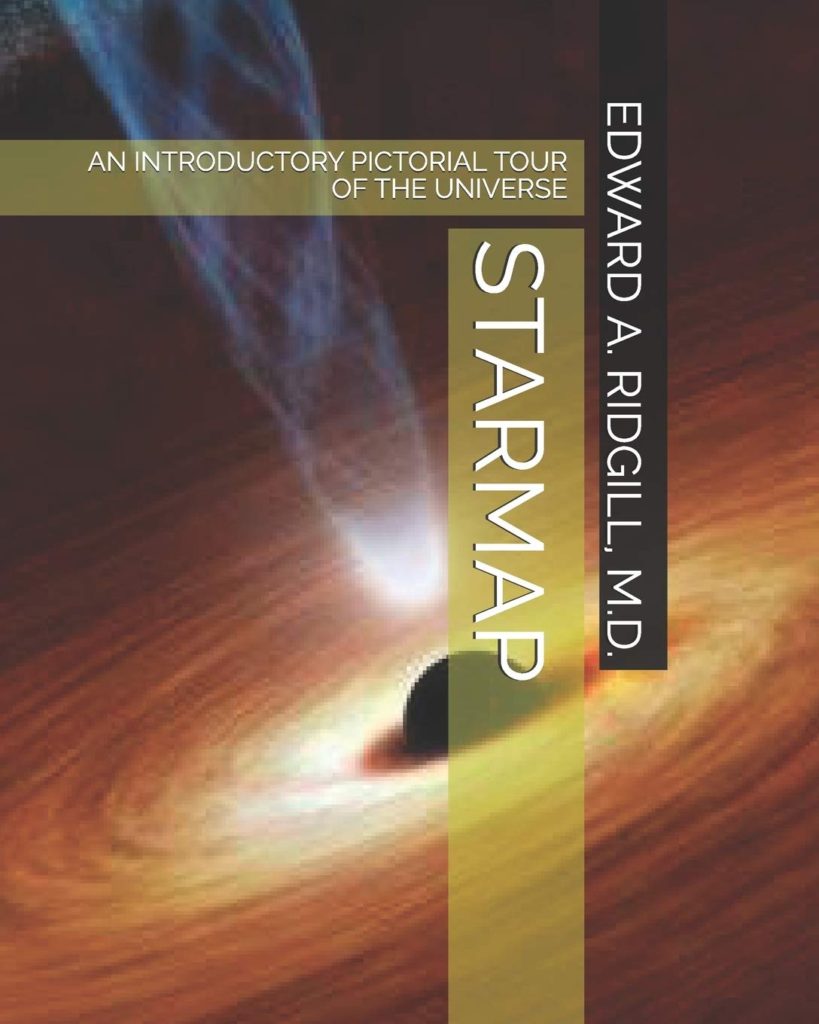A vibrant and mind-boggling adventure through the cosmos, Starmap: An Introductory Pictorial Tour of the Universe by Edward A Ridgill, M.D. is overflowing with accessible information and unforgettable images. For anyone with even a basic interest in astronomy or the workings of the universe, this coffee table book will provide endless moments of reflection.
The designation as a coffee table book is not meant to slight the very real and fascinating chapters of well-penned information in this astronomical offering. Beginning with a generalized big picture – the universe and our place within it – and scaling all the way up to the possibility of other intelligent life in the universe and theoretical quantum physics, this is an essential primer for those who love talking about space, but don’t always have the right words for it.
The author strikes a good balance between common knowledge and more abstract ideas. For example, the chapter on planets offers little more than basic facts and a few unique characteristics of planets, while the chapter on nebulae is a mesmerizing dive into the majestic details behind many pictures you have likely seen somewhere before, and some you haven’t. The difficulty of writing a book like this is the balance of education and entertainment, and Ridgill succeeds exceptionally well.
With stunning NASA images dotting these pages, some readers will be drawn in purely for the visual stimulation. Others may want a quick dive into black holes or supernovae, and will enjoy the succinct, layman’s term explanations of these astral phenomena. When it comes to the visual aspect of this book, the nebulae section is also arguably the strongest, but not necessarily the most mind-expanding. That lies with the last two sections, concerning string theory and the possibility of other life in the universe. Ridgill does an excellent job summarizing the key points and doing justice to incredibly complex questions. Dipping briefly into Einstein’s theory of relativity achieves a similar result – an easy-to-understand, albeit rudimentary breakdown of an often mind-melting subject.
However, there are also some sections that feel abruptly short, where more text would have been illuminating. The brief summation of the Big Bang Theory, for instance, feels rushed – two paragraphs to explain one of the most contentious questions in science is not entirely adequate. The section on telescopes is similarly light on content, and a more robust discussion of the technological differences and a deeper dive into the future of space-based imaging craft felt absent. All of that being said, most of the textual and editing choices are strong, providing just enough context for the striking curation of images.
On a technical level, a final proofread is warranted, as there are too many sloppy mistakes to overlook. Singular/plural disagreements, open quotation marks, misspelled words, and awkward sentence structure are easy issues to fix, but difficult not to notice when the chosen chunks of text are so informationally dense; there is no filler in the book, so errors do stand out. Finally, some of the images are not as high resolution as they should be, and there could be more variety with how images are displayed – i.e. with text wrapping around the image – which would help the book appear more professional.
While this is not a perfect book, the visual impact of the reading experience makes up for many of these minor critiques, so as a whole, Starmap is a stunning journey through the universe.
Book Links
STAR RATING
Design
Content
Editing
Get an Editorial Review | Get Amazon Sales & Reviews | Get Edited | Get Beta Readers | Enter the SPR Book Awards | Other Marketing Services
























Leave A Comment